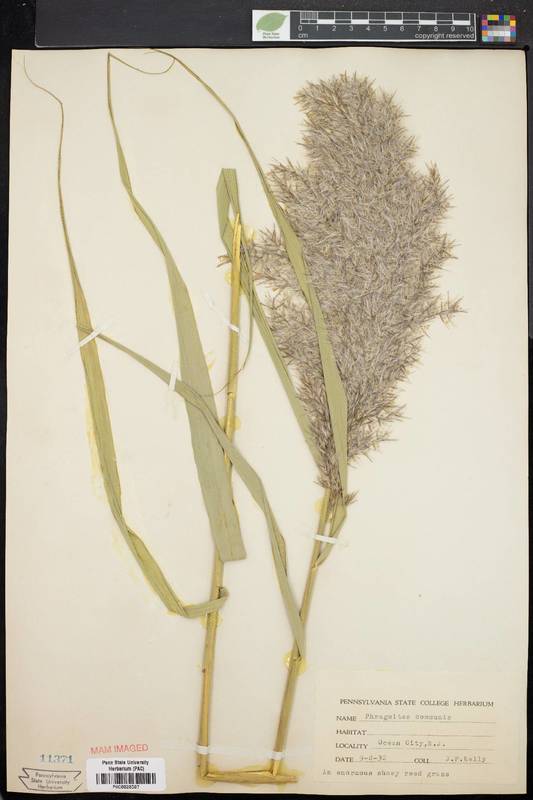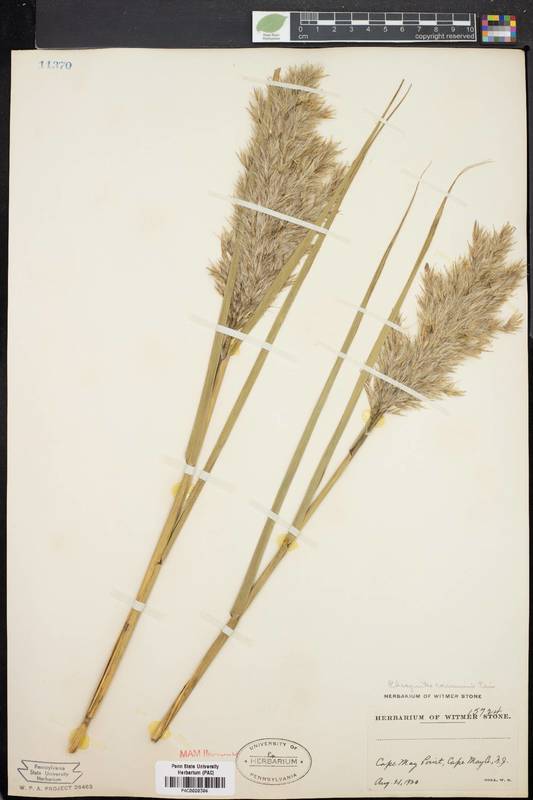Phragmites Australis Subspecies Australis Phragmites Australis Subspecies Americanus
Item
Title
Phragmites Australis Subspecies Australis
Phragmites Australis Subspecies Americanus
Phragmites Australis Subspecies Americanus
Description
Tips to help tell them apart – from Kimberly Bourke, U.S. Geological Survey, Contractor and Wesley Bickford, U.S. Geological Survey, Pathways Trainee, PhD student at University of Michigan, Great Lakes Phragmites Collaborative.
Color – Side by side, the leaves of the invasive appear bluish, while native leaves are more yellow; live stems of invasive are dull green, whereas native stems frequently appear reddish or purplish.
Leaf persistence – on dead non-native stems, leaf sheaths are difficult to remove, whereas on dead native stems, leaf sheaths are easily removed or fall off by themselves.
Ligule length – Non-native ligules are approximately half the length of native ligules (0.1-0.4 mm for invasive common reed compared to 0.4-1.0 mm for native).
Density – Stands of non-native common reed are typically very large, tall, and dense (i.e. hard to walk through easily) while native stands are usually integrated with a more diverse plant community and not as dense.
References: Saltonstall, K. 2002. Cryptic invasion by a non-native genotype of the common reed, Phragmites australis, into North America, PNAS February 19, 2002 99 (4) 2445-2449
Color – Side by side, the leaves of the invasive appear bluish, while native leaves are more yellow; live stems of invasive are dull green, whereas native stems frequently appear reddish or purplish.
Leaf persistence – on dead non-native stems, leaf sheaths are difficult to remove, whereas on dead native stems, leaf sheaths are easily removed or fall off by themselves.
Ligule length – Non-native ligules are approximately half the length of native ligules (0.1-0.4 mm for invasive common reed compared to 0.4-1.0 mm for native).
Density – Stands of non-native common reed are typically very large, tall, and dense (i.e. hard to walk through easily) while native stands are usually integrated with a more diverse plant community and not as dense.
References: Saltonstall, K. 2002. Cryptic invasion by a non-native genotype of the common reed, Phragmites australis, into North America, PNAS February 19, 2002 99 (4) 2445-2449
Source
Rights
This image is posted publicly for non-profit educational uses, excluding printed publication. Other uses may not be permitted.


